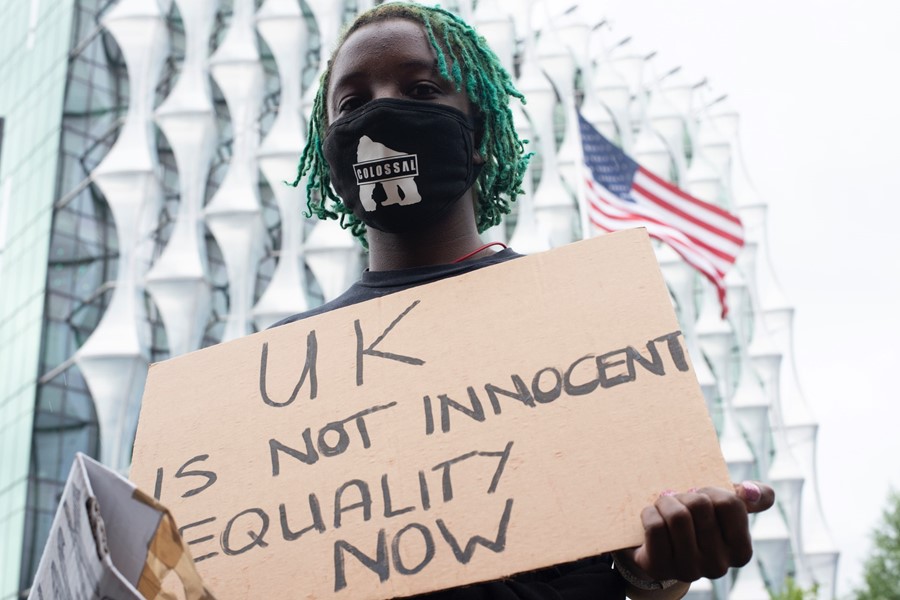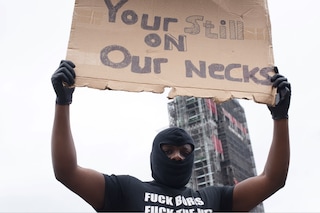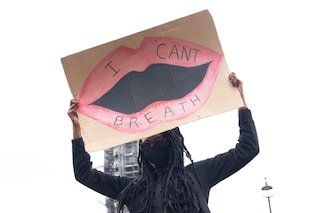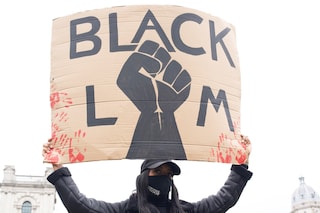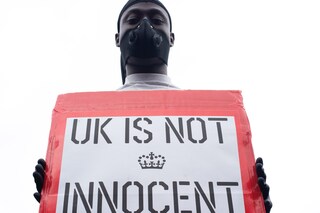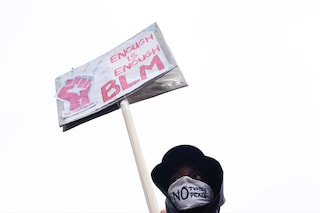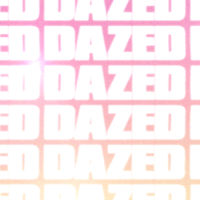Thousands of activists gathered in the capital’s Parliament Square and outside the US Embassy, showing solidarity with the US and highlighting racism in the UK
This weekend saw tens of thousands of protesters gather in London’s Parliament Square on June 6 and the US Embassy on June 7 to take part in the ongoing Black Lives Matter protests. In solidarity with ongoing demonstrations in cities across America, activists paid tribute to George Floyd, as well as other victims of police brutality in the US, including Ahmaud Arbery, Breonna Taylor, and Tony McDade.
“I’m here for the racial inequalities and how a man was killed just because of the colour of his skin. I just feel like it’s not right, it’s not fair, so I come here with my family to fight for what’s right,” one protester told Dazed. “This is the last straw for most of us, we’ve been oppressed for 400 years, and now we’re at the point where it seems everybody’s had enough,” said another. “There’s a collective unity not just from Black people, but from white people also. Most races are coming together to try to understand that Blacks lives actually do matter.”
People on the ground also drew attention to racism in the UK, holding placards that read, “the UK is not innocent”, “there is a virus greater than Covid-19 and it’s called racism”, and “1,513 deaths in police custody since 1990 in UK”. Names such as Rashan Charles, Mark Duggan, and Sarah Reed – who died in police incidents and custody – were also chanted by the crowds. The crowd was mostly made up of huge numbers of young people.
Thousands listened to speeches, which called for an end to institutional racism, spoke of British police brutality, the disproportionate use of stop and search on Black people, and the need for colonial history on the school curriculum. A minute’s silence with the crowd all down on one knee was observed to commemorate those killed by police in the UK.
The crowd later diverged into smaller groups, with some arriving at the Home Office to stand for the people who have been affected by the Windrush Scandal.
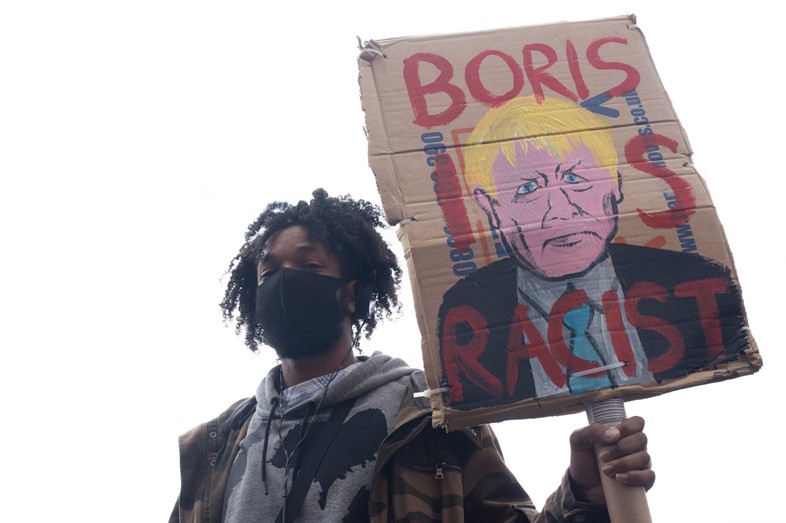
“Being a Black woman living in England, I sometimes think the racism we deny is here, it’s just a bit more under the carpet and insidious than it is in America,” said a protester.
Another agreed: “I feel like I wasn’t able to receive the education about Black history growing up in this country. I was born and raised here, everyone should be able to learn that, whether it’s a dark past, everyone should know why we’re here today.”
The statue of past prime minister Winston Churchill in Parliament Square was graffitied and his name crossed out, with “is a racist” written below. While the day remained peaceful, police began to kettle and reportedly intimidate crowds around 6pm, with officers on horseback charging at a panicked crowd. According to the Guardian, tensions on Saturday escalated “after a white man made racist remarks, prompting a person to throw a drink at him’. Glass bottles were thrown and jeering rallied as tensions grew more. One police officer was taken to hospital with non-life-threatening injuries after her horse panicked, ran, and hit a traffic light, knocking her off. According to the Met police, a total of 29 arrests were made on Saturday. Protesters who were kettled later were reportedly told by police that they had to give their names to be released, as alleged by legal observers.
Thousands more protesters, wearing face coverings and holding placards, stood outside the US Embassy the following day. Free masks, gloves, and hand gel were being given out to those attending by stewards.
Many present at both demos called for peace, and the resounding mood was hopeful and determined.
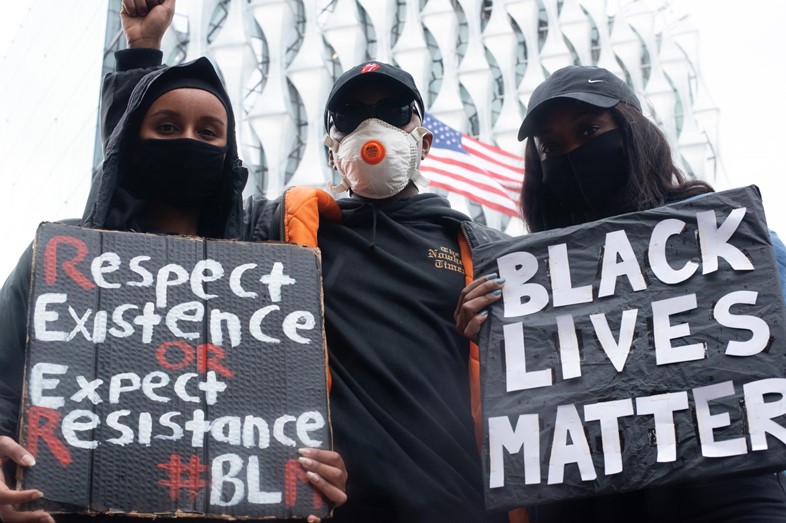
“This affects the universities we get into, our options, they fall limited at times,” a demonstrator also told Dazed. “You have to think about your skin colour before you do anything. You have to think about your skin colour when you apply for a job; you have to think about your skin colour when you walk out a shop like, ‘OMG I’m Black, I can’t walk out empty handed, they’ll think that I steal’. Every decision, every step, everything I do, my skin colour comes first ‘cos that’s what they see first.”
“I need to educate my kids, to educate society that police brutality in the 21st century is not something we should face,” said another protester. “Killing Black people, minorities everyday is not normal. I’m here to raise my voice and I need to defend my children, and to teach them how to be part of a society. I want them to feel safe.”
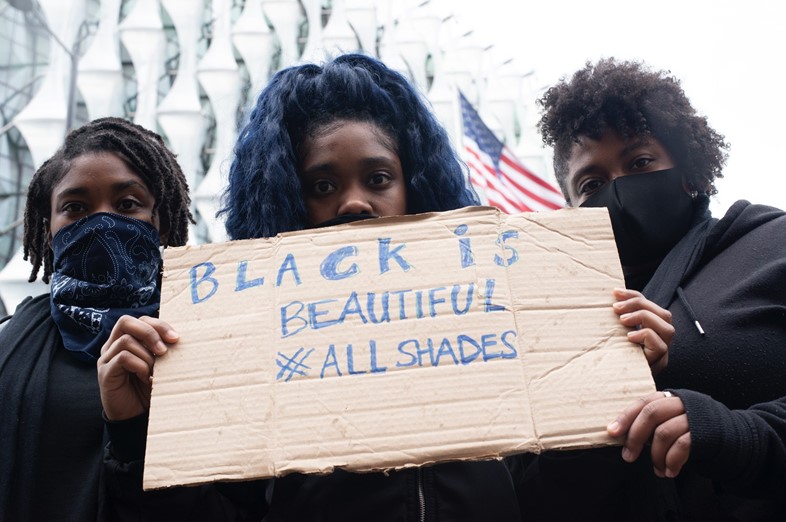
Others drew parallels to previous struggles against racism, saying: “The Civil Rights Movement took six days of protesting for them to pass the bill, so that means everyone needs to be out here as much as possible, raising awareness to what’s going on, and being active. It’s great posting on social media, but make sure you’re educating yourself, following the right people, supporting Black businesses – the time is now. We’re all united even remotely and now is the time to come together and focus on the situation and make a big change.”
“We’re here today because we want equality, we’re tired of explaining to people why we feel how we feel, we’re mentally scarred. All these images and videos we’re seeing, I don’t want to watch them. Every time it comes up, I have to see them. I’m worn out. We need to see change. It’s great to see people from all walks of live come together now and I feel like this time there’s gonna be a change.”
Across the UK, a reported 15,000 people attended Manchester’s protest, while thousands more came out for demos in Newcastle, Cardiff, Belfast, Glasgow, and Derry.
Read guides on safely protesting racism during the pandemic and how to support Black Lives Matter if you can’t attend the protests on Dazed here
